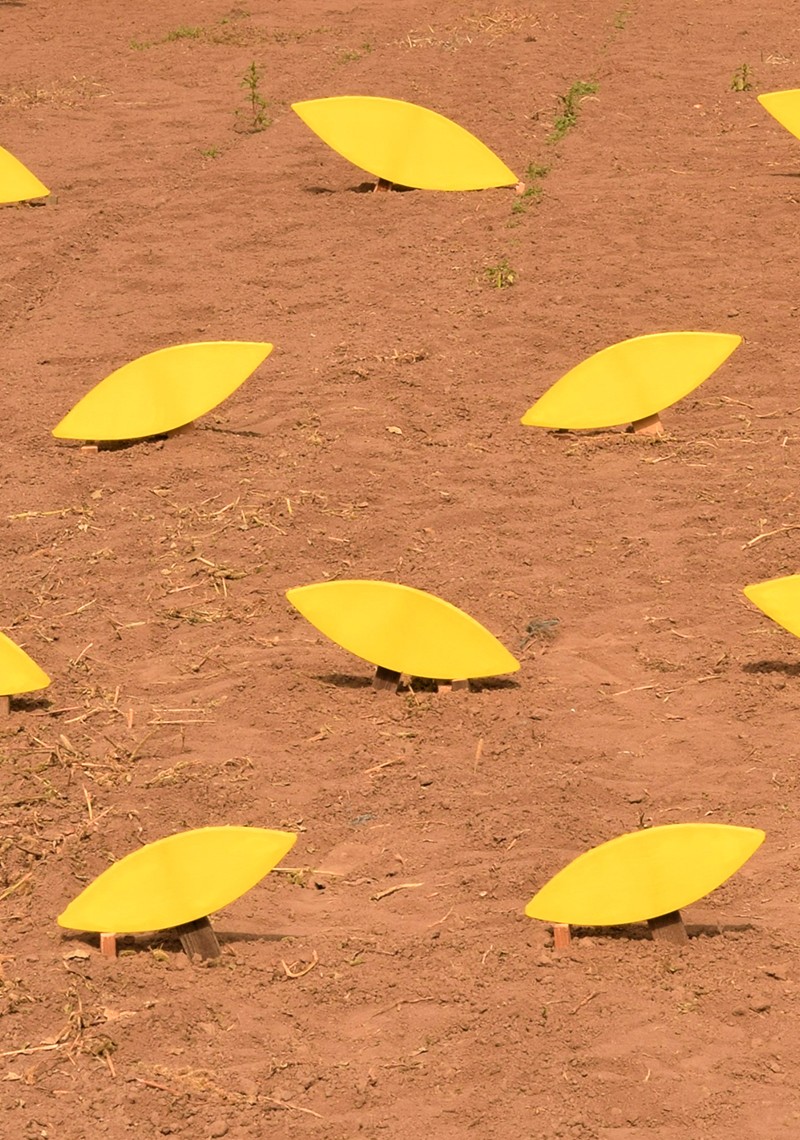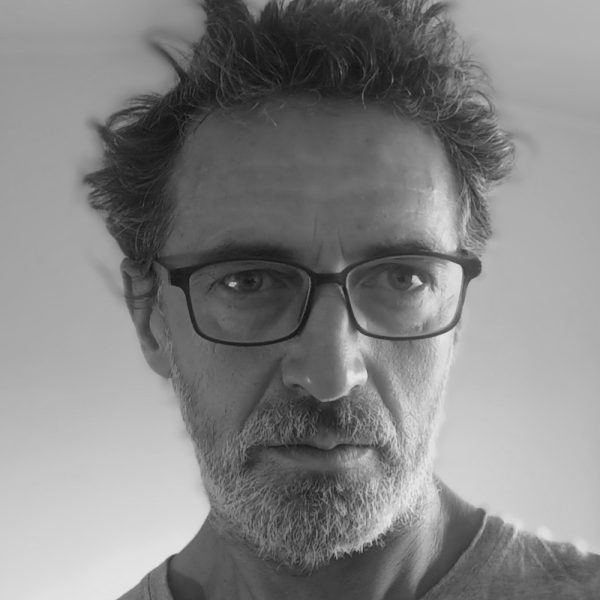Acces liber
2025


Hybrid refers to the process by which traditional agriculture based on indigenous varieties has been replaced by industrial, hyper-mechanised, and automated farming. In this context, one questions the imbalance created by the gradual decline in the productivity efficiency of hybrid seeds after the first year of full capacity. The project illustrates this production decline by using objects of varying sizes, which, while seemingly equal, actually exhibit a gradual decrease, indicating a nearly tenfold difference.
Artist

Miki Velciov
Miki Velciov (born 1968, in Dudeştii Vechi, Timis) lives and works in Timisoara. After a 10-year internship in Rome, in 2010 he started studying painting in the class of Prof. Cristian Sida at the Faculty of Art and Design, West University of Timisoara. In a short time, Velciov diversifies his interests by extending the pictorial layer to the abstraction of objects, photography, and video. Furthermore, his diploma work Uprooting (2013) represents a first approach to anamorphic installation, in which he blends painting and natural elements within a dynamic perception context, allowing for a privileged perspective on the overall image. The work concept demonstrated his concern for current themes, such as the phenomenon of migration as a form of uprooting man from his direct connection with his motherland, problematising the excessive exploitation of natural resources and pollution that destroys habitats, impoverishes the population, and chronicizes the phenomenon of migration.
Starting in 2014, Velciov begins the series of anamorphic installations with a privileged point of view, such as Big Brother (2014), Oculus (2015 and 2016), and Shock Wave (2016), revealing the omnipresence of surveillance systems as a form of excessive control typical of totalitarian societies. Simultaneously, in works such as 1 Cubic Meter of Life (2015), Inner View (2015), In Terra Pax (2016), and Inner Sound (2015), Velciov scrutinises the visible layers of reality by examining the primordial elements of nature, such as earth, water, air, and fire, thereby showcasing a clear concern for nature. Thus, in the interventions Turgidum (2018) or Triandra (2019), the fusion of these two directions extends the anamorphic installation to the landscape scale, linking the illusion of absolute control and the impossibility of the utopian perfection of totalitarian systems to the unbeatable perfection of the cyclicity of nature.
In the context of the global crisis, Velciov becomes increasingly aware of the essential difference between temporary or permanent interventions in nature, in which he implements constructive elements related to the scale of the landscape, and land art interventions proper, in which he reorganises the resources of the site in an artistic sense until their complete return to the landscape. Both interventions fall, however, into a broader category of site-specific art practiced by Velciov, both outdoor, in wild habitats (Green Forest, Cerna’s shore, the Black Sea shore, the Subuleasa canal, the agricultural field of Saravale, the pasture of Gărâna, etc.), and indoor, in disused spaces that are not part of the cultural circuit (the Battery Factory Tower, STPT workshops). Additionally, Velciov assigns the public a significant role in his anamorphic landscape interventions, placing them in a privileged position to perceive the integrality of the work. Similarly, in his participatory land art interventions, such as Labirint, Balans, Rauul de la Dealul Cerului, and Biodiversitate de la Apoş, the public becomes an integral part of the construction of the work and in the reception of the artist’s message regarding ecology and critical thinking in contemporary art.
We can say that Velciov gradually globalizes his field of action, proving national and international expertise and recognition in the field of land art through participation in exhibitions and
residencies, such as Grădina Botanică and Muzeul Naţional al Ţăranului Român + C in Bucharest (2023), Electro Global Cluj (2023), Musée LAB Angers (France, 2022), Balchik and Dazhdovnitza (Bulgaria, 2022), Cugesles-Pines (France, 2021), Gabrovtsi (Bulgaria, 2021), Cetate Arts Danube (2019), Méricourt, (France 2019), Villatalla, (Italy 2019), Adata AIR Plovdiv (Bulgaria, 2018), Danube Dialogue Novi Sad (Serbia, 2018), Rusenski Lom Natural Park Nisovo and Process Space Art Festival Russe (Bulgaria, 2016).